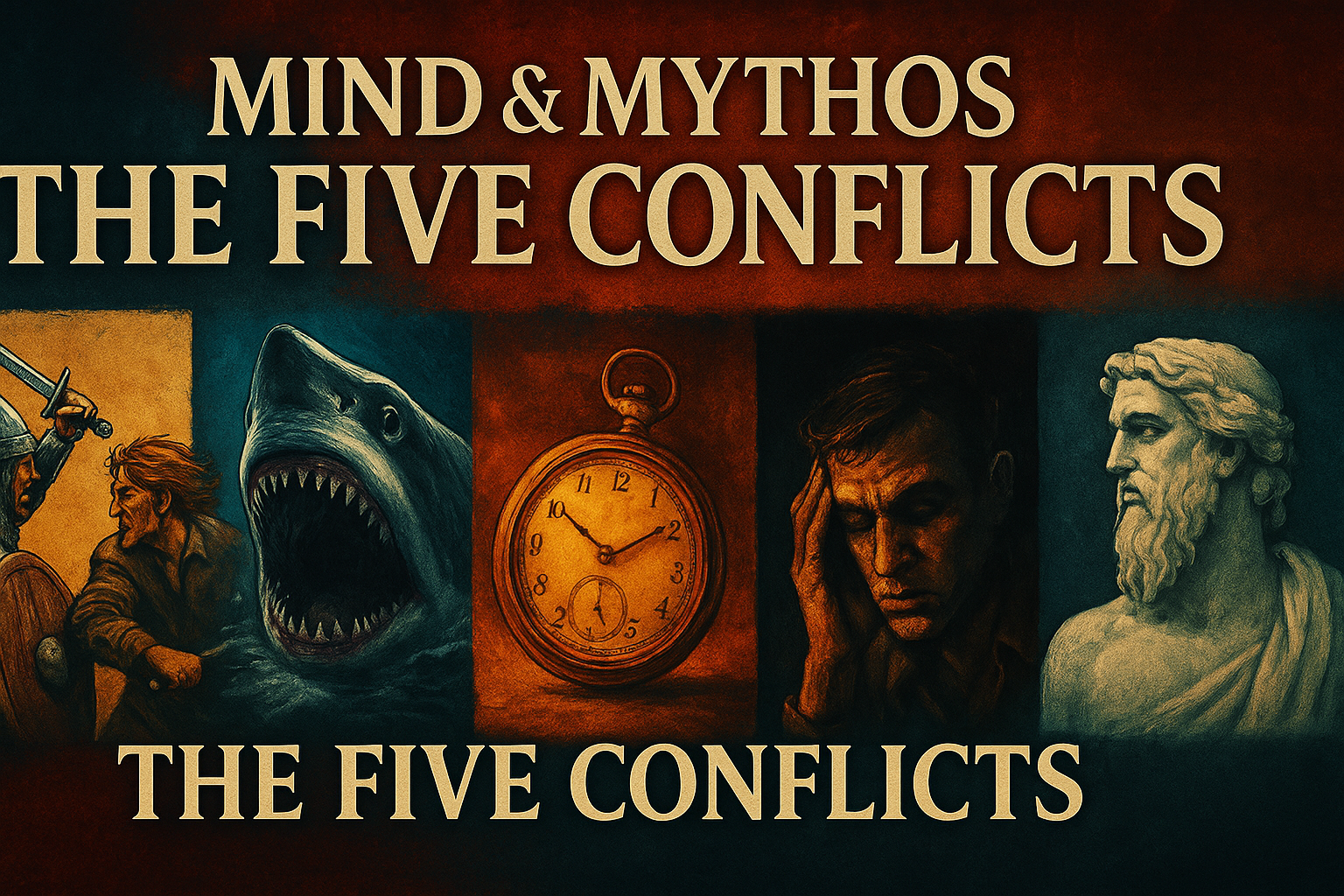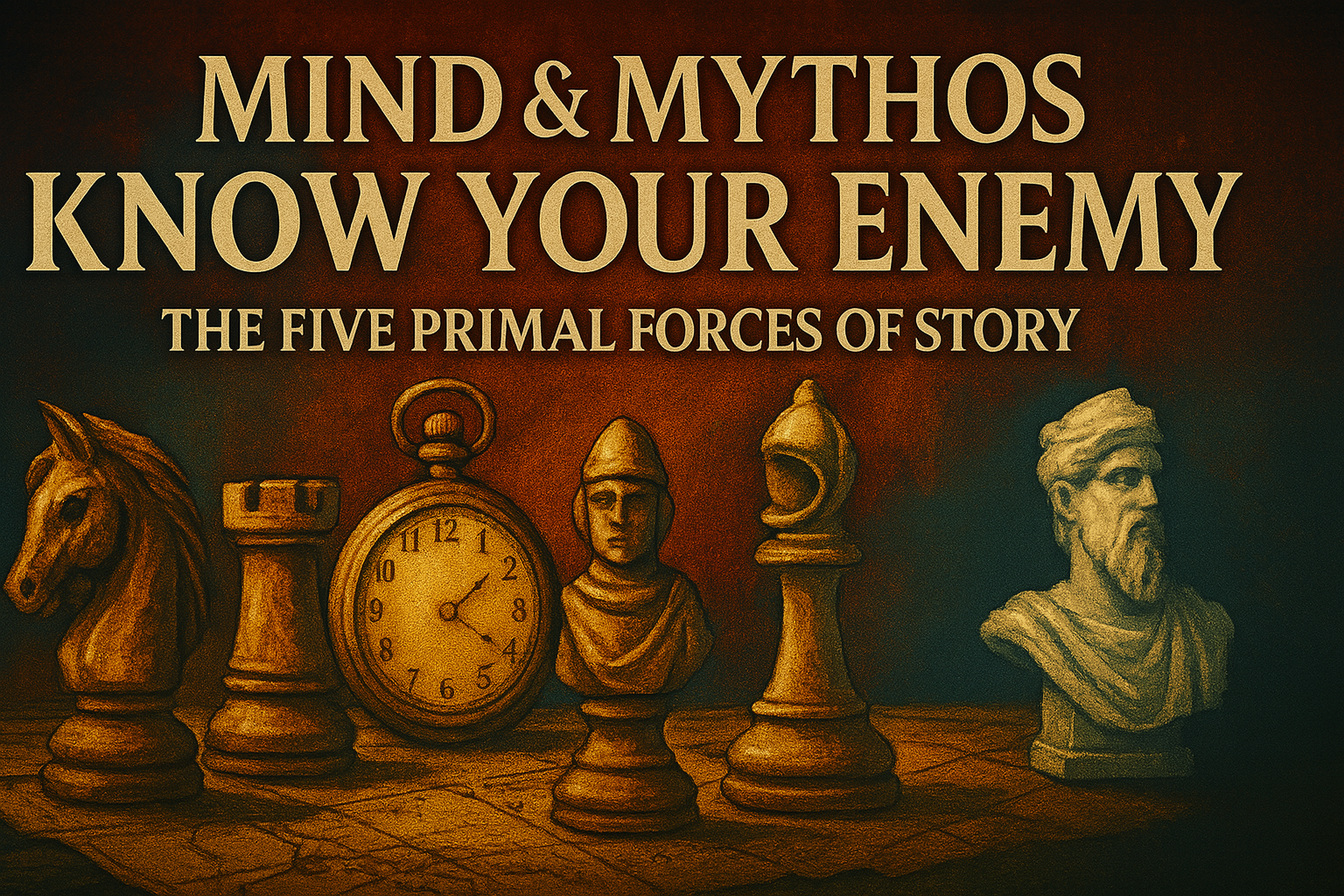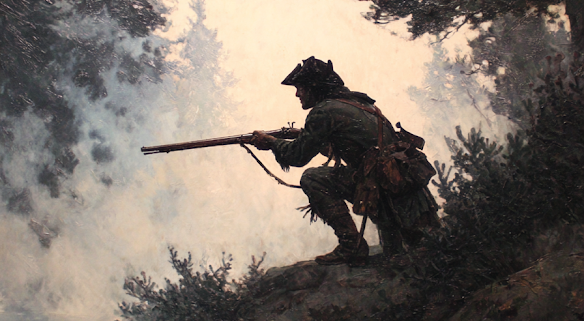
Mind & Mythos: Story as Weapon
Sharpen your narrative like a blade. Run games that cut deep.
Conflict is the engine of every great story.
You can have stunning descriptions, clever dialogue, vivid settings—but without conflict, your story has no fire. It just… sits there.
This is as true in TTRPGs as it is in cinema, myth, or literature. Conflict is what drives players to act. It’s what gives meaning to the chaos.
And if you want to run stories that cut deep—you have to know what kind of conflict you’re wielding.
There are only five types of conflict in storytelling. Once you see them, you’ll spot them everywhere.
And once you know how to use them, your adventures will hit harder—because you’ll be crafting drama at the root level.
Braveheart (1995)
William Wallace rises up against the tyrannical King Edward I. It’s personal. It’s political. It’s bloody. Wallace isn’t just fighting soldiers—he’s fighting the weight of empire, injustice, and betrayal.
This is clash-of-wills storytelling. It’s direct. It’s human. It’s fire meeting fire.
Jaws (1975)
The shark has no agenda. It doesn’t care about tourism or Brody’s job. It just feeds. And because of that, the world around it breaks—panic, denial, blood in the water.
Nature doesn’t negotiate. It tests who you are when survival is on the line.
Titanic (1997)
From the moment the iceberg hits, the clock starts ticking. Every decision is under pressure. Every romance, every betrayal, every act of heroism happens on borrowed time.
This is dread on a deadline. When the clock becomes the villain, urgency becomes everything.
Taxi Driver (1976)
Travis Bickle isn’t fighting the world—he’s fighting the mirror. Alienated, spiraling, and unseen, his violence is a scream against his own emptiness. The real war is internal.
When your character is the monster, the tension becomes personal and terrifying.
Amadeus (1984)
Salieri, the dutiful composer, watches in despair as God seemingly hands divine musical genius to the crude, chaotic Mozart. It’s not just envy—it’s cosmic injustice.
This is existential conflict. When the divine is cruel, and fate feels rigged.
Everything else in the story or session flows from that core.
This is why understanding your central conflict matters—because it gives purpose to every character, every obstacle, every twist.
Here’s how to drop each of the Big Five into your TTRPG:
Conflict isn’t just fiction—it’s baked into the real world.
What force is truly driving your current campaign arc?
Pick one of the five types. Then raise the stakes.
Let everything—from NPC motivations to environmental tension—flow from that core pressure.
The greater the force, the sharper the weapon.
Know your enemy.
Wield the right blade.
And carve your story deep.


